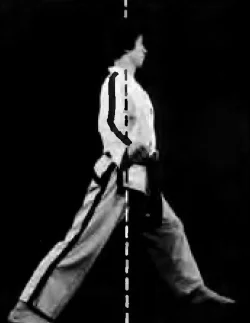I enjoy the discussion. Helps me map the semantics.
I am not a big forum poster so I do not know what iirc means.
I think what you call a vertical kick is commonly called a front or front snap kick. Facing target, body and toes up. Another kick where both the body and foot is vertical are crescent kicks. Outside (inside to outside leg motion)crescents strikes with the blade of the foot. Inside (outside to inside leg motion) strikes with the ball of foot.
iirc is shorthand for "If I Remember Correctly".
From my understanding of the terminology we use:
Front snap kick is knee up, foot swings forward, hitting with ball of the foot (or instep if the target is the groin).
A variation of that is a front pushing kick, which is identical except for having a "push" motion instead of a "snap"...
Then there's a front rising kick, where the leg is kept almost straight and lifted to the front - either as a flexibility exercise or a defensive manoeuvre.
Crescent kick and variations - I actually had a discussion after class about this the other day.
What used to be called an inward crescent (foot is vertical and comes in toward, possibly crossing, centerline from it's own outside) is now just a crescent kick.
What used to be called an outward crescent kick (foot is vertical and moves toward it's own side, away from centre, can start from the other side of centre) is now a horizontal kick - the trajectory is horizontal.
These are all loosely classified as vertical kicks because the foot is vertical, but the only one currently named "vertical kick" is the horizontal kick (names are apparently interchangeable, I'm trying to ascertain as to what extent), ex-outward crescent.
Just for fun, the horizontal kick (outward crescent) can be changed into other kicks...
If you angle your toes toward the direction of travel and move in an arc, you can use that to defend against an incoming kick or punch with the footsword/blade of the foot (if you're flexible and fast enough) - then it's a hooking kick (note, not a hook kick, that's different).
If you do almost the same, but use the ball of the foot (or sometimes instep) as the tool for an attack, it's a twisting kick.
If you do an "inner crescent" but turn your foot horizontal and use the ball of the foot, that's a turning kick (roundhouse).
Some of these the body will be vertical due to skeletal mechanics, but that's unimportant as to the name of the kick...

